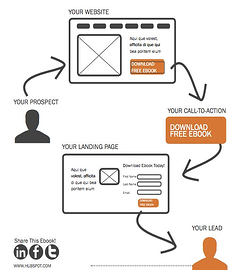 I recently had someone approach me with an invitation to connect on LinkedIn. His profile seemed to share some common ground with me, so I agreed to connect with him. Shortly after accepting his invitation, he sent me a message. He told me that he had recently sold a company he founded and wanted to start an internet marketing company. He asked me if I would be willing to meet with him so that he could pick my brain about starting a company like mine.
I recently had someone approach me with an invitation to connect on LinkedIn. His profile seemed to share some common ground with me, so I agreed to connect with him. Shortly after accepting his invitation, he sent me a message. He told me that he had recently sold a company he founded and wanted to start an internet marketing company. He asked me if I would be willing to meet with him so that he could pick my brain about starting a company like mine.
I try and be as helpful to people as I can - it's just good karma. But the most precious commodity I have right now is my time; there just aren't enough hours in the day to do what I'd like both personally and professionally. My most important objective professionally is to grow my company so that I can invest in people and processes to scale my company and to continually improve the customer experience. Maybe I'm missing a piece of the puzzle, but the request came across to me as someone trying to stand up a competitor to me in my targeted vertical market asking me for free consulting. Which brings me to the topic of this article: this person forgot the 5 most important words in any sales approach - what's in it for me (WIIFM)?
Your integrated marketing strategy needs to cut through the noise
B2B buyers are constantly bombarded with requests for their attention. Most of those requests blend into a background of white noise. The only way you can possibly capture a buyer's attention is to clearly communicate your value to the buyer in each and every communication. In other words, you need to constantly demonstrate what's in it for them in your sales and marketing messaging.
The high level of noise and the ability for buyers to avoid it is the main reason so many companies are shifting budget from outbound to inbound lead generation tactics. According to HubSpot's 2012 State of Inbound Marketing study, one-third of CMOs say that more than half of their budgets have shifted from traditional to digital marketing in the past year. Rather than to try shout louder with with outbound marketing, inbound marketing let's buyers find you when they research purchase options.
You need to show WIIFM in every step of your revenue generation process
Most B2B sales require a series of mini-decisions before a buyer makes their ultimate purchase decision. Consider the lead generation process illustrated below. When a visitor comes to your website and sees the call-to-action for your lead generation offer, they need to be convinced that clicking through to your landing page holds value to them. When they come to your landing page, the headline needs to show value for them to read the copy of your landing page. The body needs to show value for them to exchange contact information for your lead generation offer. If they don't see value in any one of the steps described above, they'll bounce off of your website and you will lose a potential lead. And that's just to become a top-of-the-funnel lead! As you design your lead generation and sales processes, make sure you answer the WIIFM question at every step of your process.

Use context in your revenue generation process to provide value
In an ideal world, you would have a unique sales approach to every individual tailored to their unique wants and needs. Some companies are already there. Take Amazon.com - they actually do contextualize their messages to indivduals based on their past purchase history and browsing behavior.

Small and mid-sized buinesses can also take advantage of marketing data to provide contextualized messaging to their customers and prospects. One example of this is segmentation in email marketing. Your email marketing will be much more effective if you send targeted emails based on things like industry, job title and geographic location. For example, 2 of the vertical companies our company targets are insurance agencies and technology companies. We know that we'll get far better results when we segment our contact lists by industry and send contextualized emails to each targeted vertical.
This is just one example of how SMB companies can contextualize their marketing. If they use HubSpot's internet marketing software, they can segment their marketing even further. One example is "smart" calls-to-action, which show different messaging to different website visitors based on demographic data.
It's important to answer your buyer's question, "what's in it for me" at every stage of your revenue generation process. If you don't, you'll quickly fade into the background white noise that busy buyers have learned to ignore. Inbound marketing is a great way to attract interested buyers into your revenue generation funnel by providing information to help them solve problems on their own terms. Contextualizing your marketing by tailoring messaging and content by demographic factors like industry, job title and location is another great way to show your customers and prospects "what's in it for them." Want to learn more? Schedule a free 30-minute consultation.







